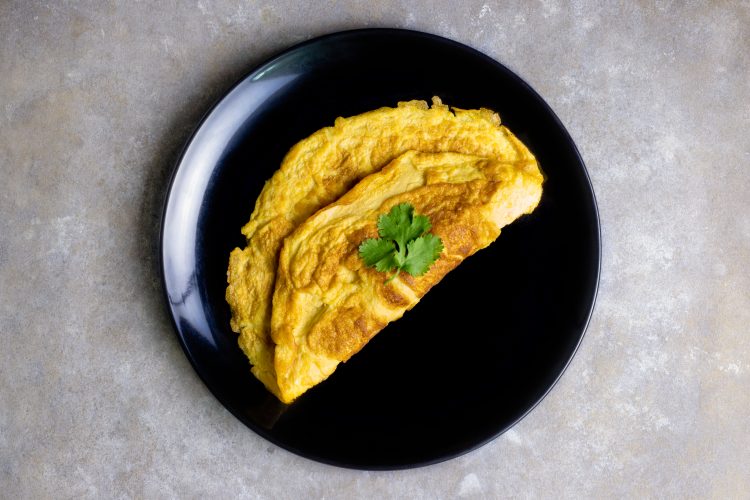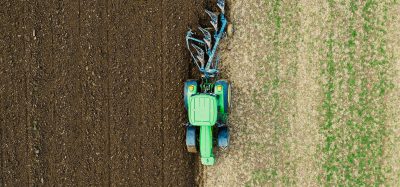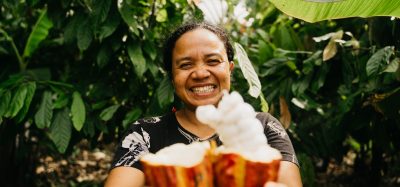Forget RoboCop, it’s all about robot chef
- Like
- Digg
- Del
- Tumblr
- VKontakte
- Buffer
- Love This
- Odnoklassniki
- Meneame
- Blogger
- Amazon
- Yahoo Mail
- Gmail
- AOL
- Newsvine
- HackerNews
- Evernote
- MySpace
- Mail.ru
- Viadeo
- Line
- Comments
- Yummly
- SMS
- Viber
- Telegram
- Subscribe
- Skype
- Facebook Messenger
- Kakao
- LiveJournal
- Yammer
- Edgar
- Fintel
- Mix
- Instapaper
- Copy Link
Posted: 5 May 2022 | Abi Sritharan (New Food) | No comments yet
How do you like your eggs in the morning? An intelligent machine may have the answer as researchers from the University of Cambridge have trained a robot chef to taste and cook an omelette.


A robot ‘chef’ has been created to taste food and assess whether it’s sufficiently seasoned.
Working in collaboration with domestic appliances manufacturer Beko, researchers from the University of Cambridge have trained their robotic chef to assess the saltiness of a dish at different stages of the chewing process.
They hope that their results could be useful in the development of automated or semi-automated food preparation by helping robots learn what tastes good and what doesn’t, making them better cooks.
The robot chef – which has already been trained to make omelettes – tasted nine different variations of a simple dish of scrambled eggs and tomatoes at three different stages of the chewing process, and produced ‘taste maps’ of the different dishes.
The researchers stated that this ‘taste as you go’ approach significantly improved the robot’s ability to quickly and accurately assess the saltiness of the dish over other electronic tasting technologies, which only test a single sample.
“Most home cooks will be familiar with the concept of tasting as you go – checking a dish throughout the cooking process to check whether the balance of flavours is right,” said Grzegorz Sochacki from Cambridge’s Department of Engineering, the paper’s first author. “If robots are to be used for certain aspects of food preparation, it’s important that they are able to ‘taste’ what they’re cooking.”
“When we taste, the process of chewing also provides continuous feedback to our brains,” said co-author Dr Arsen Abdulali, also from the Department of Engineering. “Current methods of electronic testing only take a single snapshot from a homogenised sample, so we wanted to replicate a more realistic process of chewing and tasting in a robotic system, which should result in a tastier end product.”
The researchers are members of Cambridge’s Bio-Inspired Robotics Laboratory which focuses on training robots to carry out problems which humans find easy but robots difficult, such as cooking.
To imitate the human process of chewing and tasting in their robot chef, the researchers attached a conductance probe, which acts as a salinity sensor, to a robot arm. They prepared scrambled eggs and tomatoes, varying the number of tomatoes and the amount of salt in each dish. Using the probe, the robot ‘tasted’ the dishes and returned a reading in just a few seconds.
To imitate the change in texture caused by chewing, the team then put the egg mixture in a blender and had the robot test the dish again. The different readings at different points of ‘chewing’ produced taste maps of each dish.
While their technique is a proof of concept, the researchers say that by mimicking the human processes of chewing and tasting, robots will eventually be able to produce food that humans will enjoy and could even be tweaked according to individual tastes.
“When a robot is learning how to cook, like any other cook, it needs indications of how well it did,” said Dr Abdulali. “We want the robots to understand the concept of taste, which will make them better cooks. In our experiment, the robot can ‘see’ the difference in the food as it’s chewed, which improves its ability to taste.”
In future, the researchers are looking to improve the robot chef so it can taste different types of food, such as the sweet stuff!
Related topics
Data & Automation, Product Development, Research & development, Robotics & automation, Salt, Technology & Innovation









